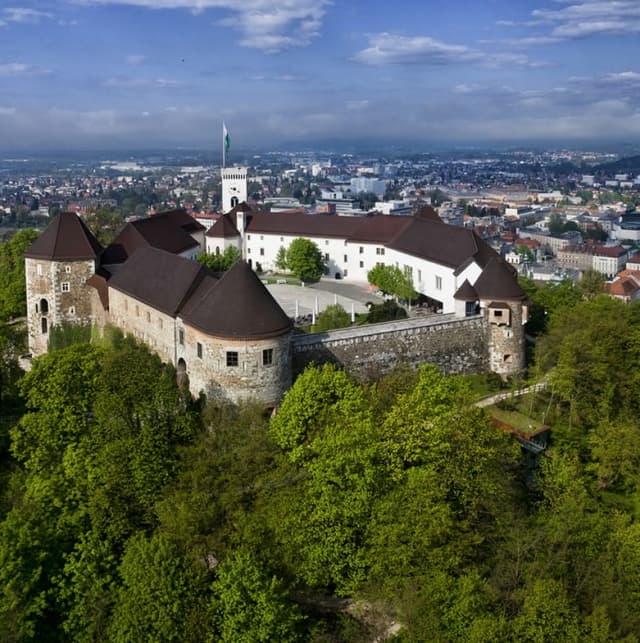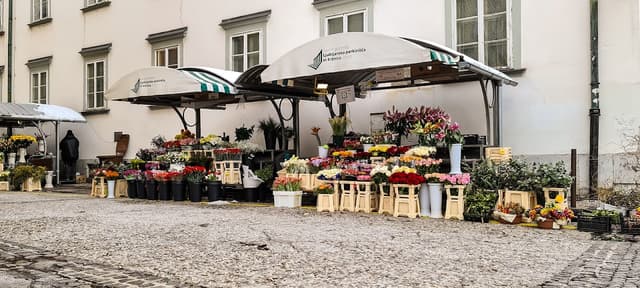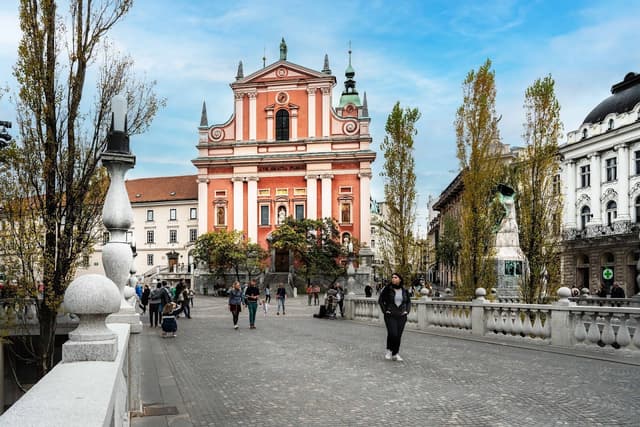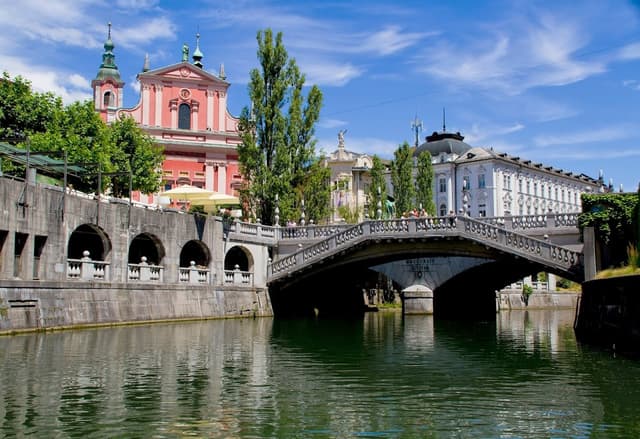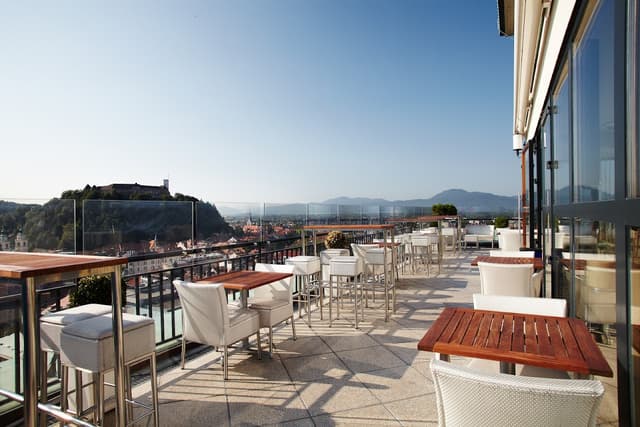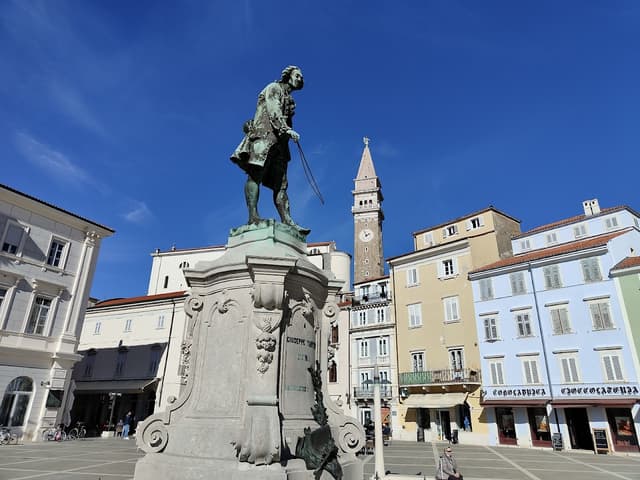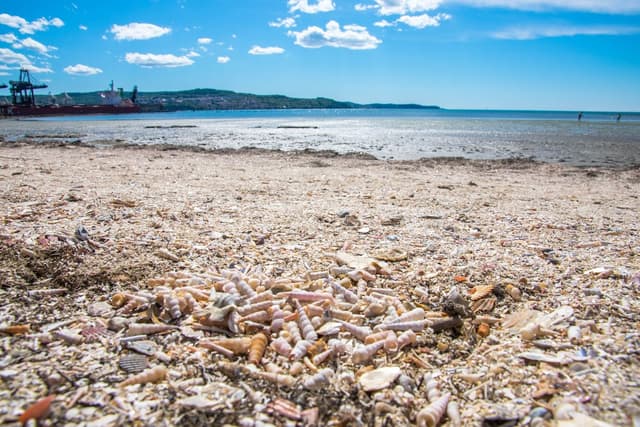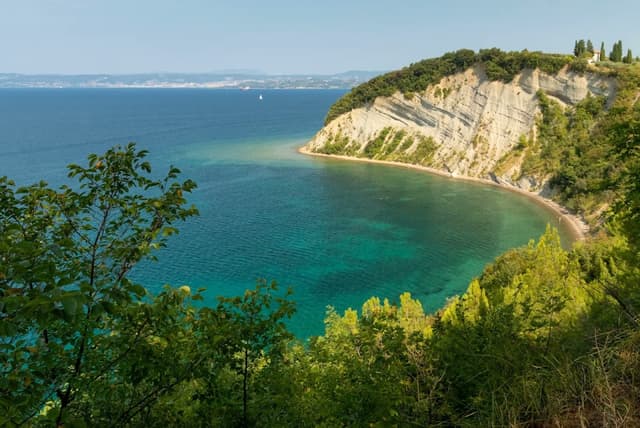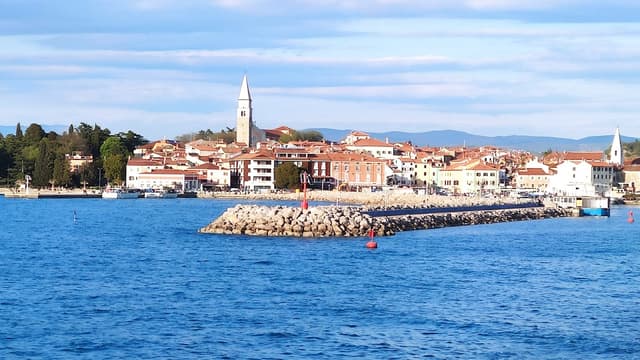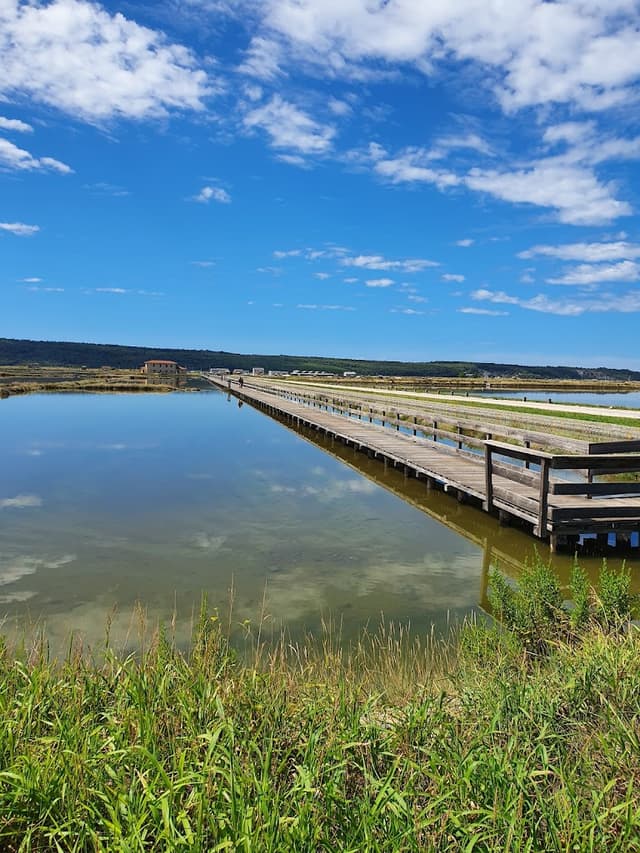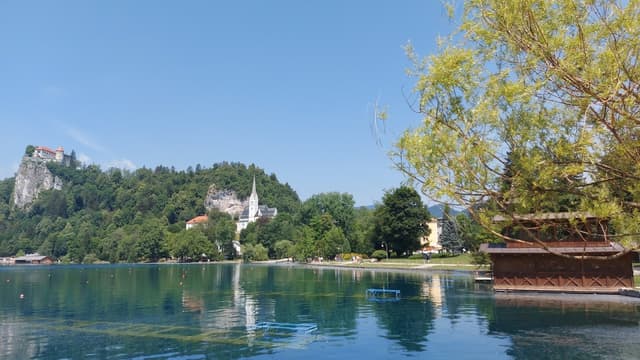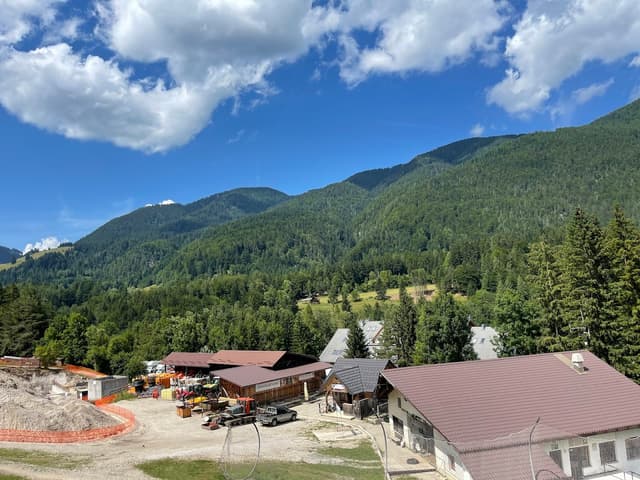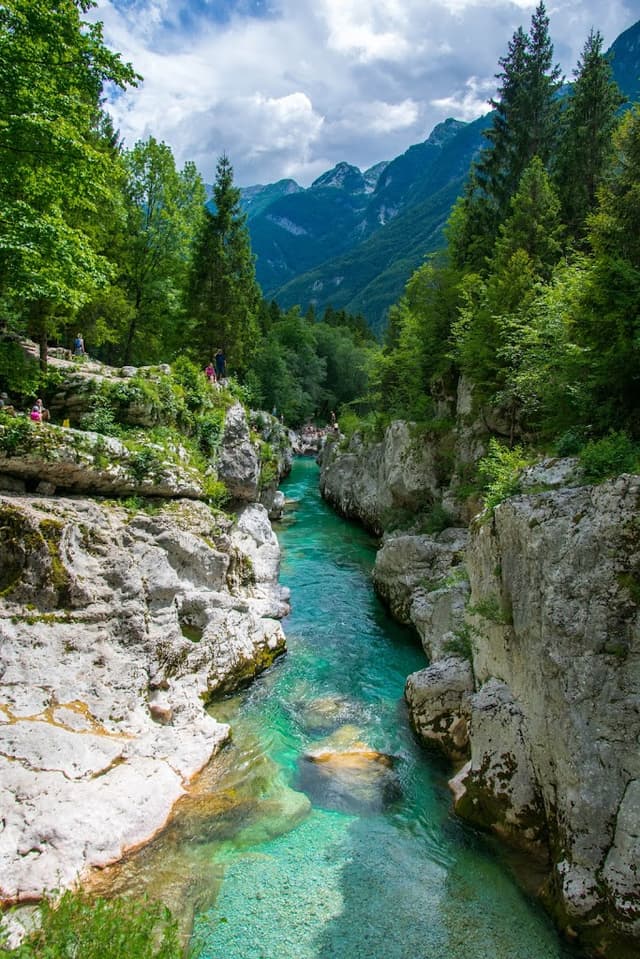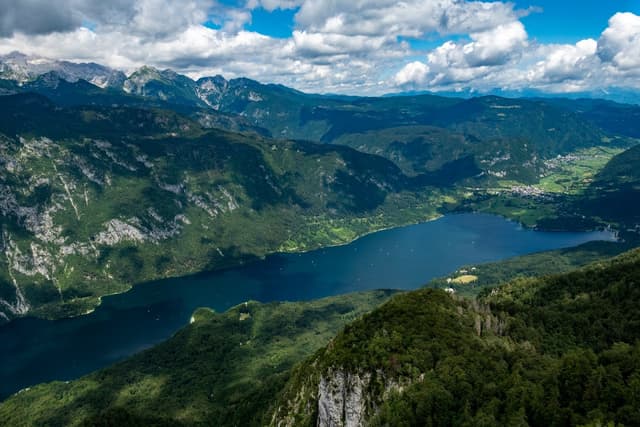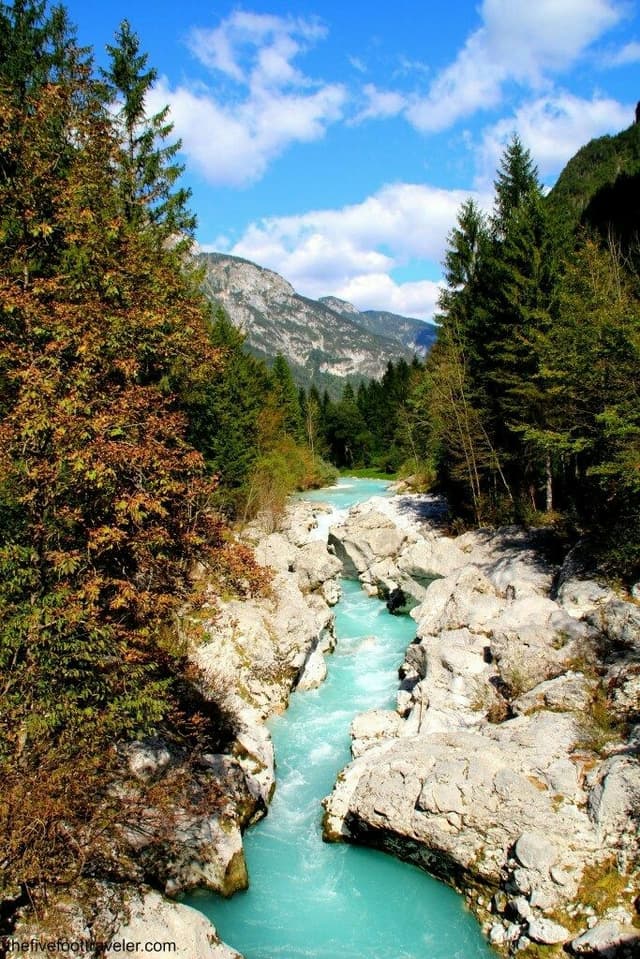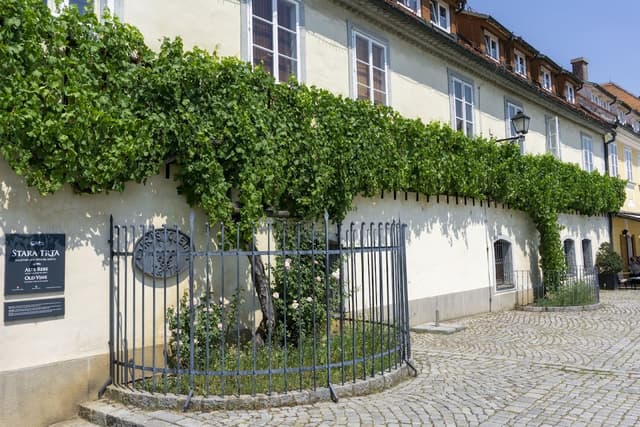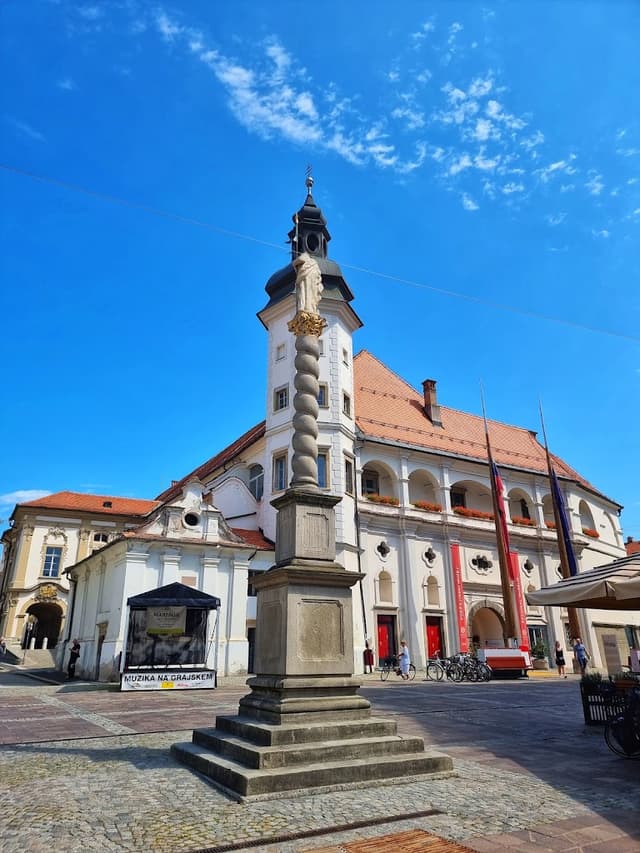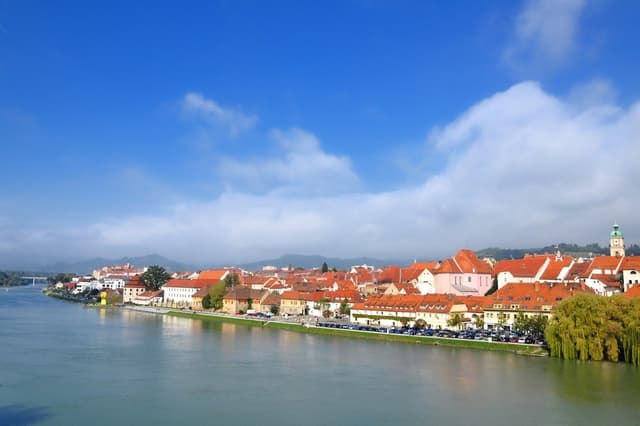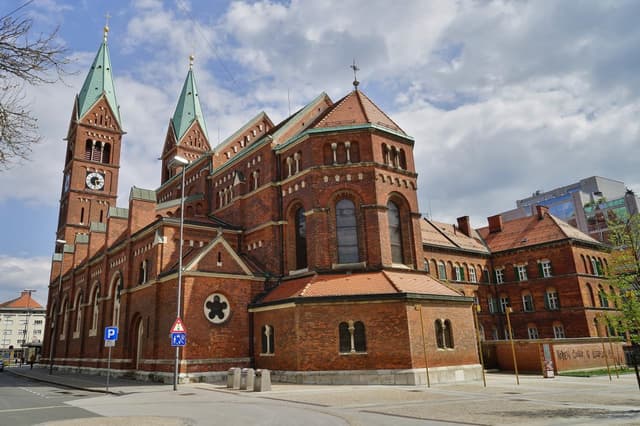THE CAPITAL
Since the very name of the country carries the word "love", it is no surprise that its capital city Ljubljana holds similarity to the word "beloved" (in Slovene "ljubljena").
Ljubljana lies in the centre of the country, at the junction of the Gorenjska, Notranjska and Dolenjska regions, which once formed the Kranjska region. It is the largest and most populous city in Slovenia with over 284,000 residents. Even though Ljubljana is the biggest Slovenian city, it is still walkable and all the monuments are easily reachable by foot.
The capital city represents the centre of education, culture, art, economy, cuisine, as well as nightlife. As a traveller, you definitely won't be bored visiting Ljubljana, as it offers something for everyone. Let's briefly explore your options!
You have to incorporate the following sights into your visit to Ljubljana:
Ljubljana Castle
@deleteduser160
The Ljubljana Castle is a definite must when visiting Ljubljana! On a sunny day, you are able to see the whole city and its surroundings. It is possible to walk to the top of the castle; another option is taking the funicular (Krekov trg 4), costing 3,30€ for adults one way. Ljubljana Castle offers several tours (basic and thematic) to choose from. If you have the time, consider having a picnic or a pizza date at the top of the Castle hill.

Details
Ljubljana Central Market
@deleteduser160
Ljubljana Central Market is not just a shopping centre, but traditionally a place where the residents of Ljubljana meet and socialise. The Central Market comprises an open-air market (on Vodnik Square and Pogačar Square), a covered market between the two squares, and Plečnik's covered markets along the Ljubljanica River. The market is complemented by restaurants and street food stalls. The market is open every day from 7am to 4pm.

Details
Prešernov trg
@deleteduser160
Ljubljana is probably one of the few cities where the central square is not a monument to a local hero, but to a poet. France Prešeren (1800-1849), most famous for his sonnets and most of whose works were written in Slovene, was one of the greatest poets of the European Romantic era.
The Prešeren Square is the beating heart of Ljubljana. Get a real feel for the pulse and vibe of the city in the Prešeren Square and its surroundings!

Details
Triple Bridge
@deleteduser160
The central stone bridge of the 1842 the Triple Bridge stands on the site of a former wooden, strategically important medieval bridge that connected the countries of north-western Europe with the Balkans and south-eastern Europe. Between 1929 and 1932, Plečnik added two more pedestrian bridges to the central bridge, creating a unique architectural feature of Ljubljana.
Similarly as the Prešeren Square, the Triple Bridge is the centre of Ljubljana itself. Definitely check it out on your next visit to Ljubljana!

Details
Nebotičnik - Skyscraper
@deleteduser160
The terrace of the café at the top of Nebotičnik, a venerable example of architecture from the period between the two World Wars, offers some of the most beautiful views of Ljubljana on all sides. The classic Slovenian song "Na Vrhu Nebotičnika" describes a visit to the café as a first-class romantic experience in Ljubljana. Today, as it was intended when it was built, it houses a variety of shops, offices and businesses, and is occupied by tenants from the 6th to the 9th floor. It also houses a nightclub with a café, and a restaurant.

Details
THE COAST
Among various other things, Slovenia also possesses approximately 43 km of coast. Between Italy and Croatia, there is a small part of the seaside that the Slovenians cherish majorly.
The infrastructure on the coast is great, so it shouldn't be a problem to travel from one city to another. My suggestion is to rent a bike and cycle among the Slovenian coast, which is what I did! Of course, it is not necessary to cycle the whole coast - you can choose a specific section and explore it in depth!
Let me now take you to several places on the Slovenian coast:
When visiting the Slovenian coast, these places are a must!
Piran - center
@deleteduser160
The most beautiful town on the Slovenian coast was built on salt. The Piran salt pans, where the old salt flower is still produced today, were the source of the flourishing of a picturesque Mediterranean town with walls, a church with a view and cultural attractions. Tartini Square is the centre of Piran and surely worth visiting!

Details
Pokopališče školjk
@deleteduser160
If you venture along the coast, you can explore the Cemetary of Shells. Here you can find 234 species of all the snails of the Gulf of Trieste and spot at least 30 species of different birds. Since the interest of the municipality of Ankaran is to keep the Cemetery for future generations to see, they kindly ask visitors to just look at (and photograph) the shells and not to collect them and take them with you.

Details
Strunjan
@deleteduser160
Strunjan is a coastal village located between Piran and Izola in the Municipality of Piran. It is situated in the Roja valley, along the salt pans and on the surrounding hills. The favourable natural conditions of the Strunjan peninsula, especially the maritime climate and its sheltered position, have enabled mankind to establish and develop traditional economic activities in harmony with nature.
You can reach Strunjan by car or, as in my case, by bike - through the tunnel of Valeta, which is a great way to cool off in the summer months. When arriving to Strunjan, you can take a swim at the nicely furnished Strunjan beach.

Details
Izola
@deleteduser160
All year around, the city of Izola offers a palette of unforgettable experiences. You can indulge in visiting beautiful Istrian villages, hike and bike, and of course eat delicious Istrian dishes.

Details
Sečovlje Saltworks
@deleteduser160
In the Sečovlje Saline Landscape Park, the past and the present are still shaking hands. The ancient way of saltpanning, which the saltpanners of Piran learned long ago from their teachers, the saltpanners of the island of Pag, is still something special today, even by Mediterranean standards.
The entrance fee for adults during the high season is 7€ and 6€ during the low season. As the Sečovlje Saltpans are one of the greatest attractions of the coastal area, it is definitely worth visiting.

Details
THE MOUNTAINS
The Gorenjska region is my favourite part of Slovenia. If I had to choose between the Slovenian seaside and mountains, my answer would always be the same.
In the winter months, Gorenjska offers various skiing resorts and hiking options. In the summertime, several 2000m mountains wait for you to reach the top! Inbetween the mountain ranges you will find lakes to cool yourself off, such as Bohinj and Bled lake, which are both appropriate for swimming.
Beside the gorgeuos sights and views, Gorenjska provides opportunities for all the sports you can possibly think of.
Don't wait any longer - come visit the mountains in Slovenia!
Even though it is impossible to capture all the beautiful sights in Gorenjska region, let's start with a few musts:
Bled
@deleteduser160
Lake Bled is a true pearl of Slovenia, both in winter and summer. In summer, it serves those who want to cool off, and in winter, it is a feast for the eyes when it is covered in a white blanket of snow. The view from Bled Castle is majestic and magnificent, but the entrance fee to the castle is now €15. There you can have a snack in the café and admire the view. You can also climb the Ojstrica, named after its sharp shape, which rises high above Lake Bled. The climb, which takes about 20 minutes, is short but steep and undoubtedly worth it for the outstanding view from the top. At the top, there is a bench facing the romantic panorama of Lake Bled. For those who fancy a long walk, I recommend the circular route around the lake, which is about 6km.

Details
Kranjska Gora
@deleteduser160
Kranjska Gora is a haven for hikers, cyclist, and any other sports enthusiast, as well as for seekers of rest and relaxation. Lake Jasna is a beautiful lake in Kranjska Gora, surrounded by mountains such as Slemenova špica, Srednji vrh, Mojstrovka and Vitranc. It is possible to cycle all the way from Lake Jasna to Laghi di Fusine in Italy, very close to Kranjska Gora. In Kranjska Gora and its neighbouring villages you can find exclusive glamping accommodations!

Details
Soča
@deleteduser160
"You are beautiful, clear daughter of the mountains, you are wondrous in your natural beauty, when you are not disturbed by the transparent depths of the dark storm, you are beautiful, daughter of the mountains!" (Simon Gregorčič, Soči)
The excerpt from a poem Soči is just one of many that praise this river in the West of Slovenia. Its emerald green colour really is a feast for the eyes! It is worth seeing Velika korita Soče, or just admire it from the villages it passes, for example Kobarid and Tolmin.

Details
Lake Bohinj
@deleteduser160
Lake Bohinj must be one of my favourite places in Slovenia. Much less touristy than Lake Bled but equally beautiful. During our stay, we slept at Planinski dom Savica in Ukanc (west of the lake), in close proximity to Savica Waterfall, a famous A-shaped waterfall that is 78 meters high. We also decided to SUP on the lake, as well as hike mountain Vogar north of the lake.

Details
Vršič Pass
@deleteduser160
At 1611 m, the Vršič mountain pass is the highest road pass in the Eastern Julian Alps. The high mountain road from Kranjska Gora via Vršič to Log v Trenta has 50 serpentines, 24 on the Kranjska Gora side and 26 on the Trenta side.
An asphalt and paved road leads to Vršič from Kranjska Gora, past Lake Jasna, Miha's home, the Hut on the Forest, Erjavec's hut to Tičar's mountain home on Vršič. Along the way, see the Russian Chapel, the natural window in the Prisanka rock face and the Ajdov Maiden. At the top, you can rest and have refreshments in the mountain huts. Vršič is also the starting point for Malo Mojstrovka, Jalovec and (especially for families) the very popular Slemenova Špica.

Details
THE CITY OF THE OLDEST VINE IN THE WORLD
In this guide, I left the best for last. Maribor is the city in the northeast of Slovenia. It is a student city, offering more than you might think.
The following places are waiting for you to visit them in Maribor:
Hiša Stare trte
@deleteduser160
The Old Vine, the oldest vine in the world, is located in Maribor, right in the heart of the Old Town. At more than 400 years old, the Old Vine is listed in the Guinness Book of World Records as the oldest vine in the world still bearing fruit - no doubt, experts confirm that it is indeed the oldest! Every year, the masters squeeze the precious juice from its grapes, of the velvet or blue couch variety. The old vine symbolises the rich wine culture of Maribor, Slovenia and, ultimately, the whole world. Today, its descendants grow almost all over the world.

Details
Maribor Castle
@deleteduser160
One of the most remarkable architectonic monuments of our city grew exuberantly right in its centre: Maribor’s town castle is surrounded by the busy squares of Grajski trg, Trg svobode and Trg Generala Maistra and in the castle you can visit the Regional Museum of Maribor, which is home to many collections of great value that will certainly impress you!

Details
Piramida
@deleteduser160
The half-hour climb from the City Park to the 386-metre-high city hill, planted with vineyards, will reward you with an exceptional view of Maribor and the wider surroundings with Pohorje and the Drava Fields.
The Piramida was once the site of Maribor's castle - a classicist chapel with a stone statue of the Virgin Mary was erected at the top of the hill in 1821 to commemorate it, and the ruins of the castle bear witness to the fact - and today it is a popular walking and sightseeing spot for Maribor residents and visitors.

Details
Lent
@deleteduser160
Lent is the heart of Maribor. On hot summer evenings, many people gather there. All year round, it serves as a pleasant path for a stroll along the River Drava. Lent is home mainly to bars, but also to shops and clubs.

Details
Basilica of Our Mother of Mercy
@deleteduser160
The Franciscan Church is one of the important sights of Maribor. It enriches this city with its appearance and history. And while visiting the old city center, you will notice a building of a specific red color. Franciscan church with a monastery. The Franciscan church was first a monastery built in the 12th century, and the cathedral itself was built with two towers between 1892 and 1900. The Viennese architect who designed the church is Richard Jordan, and the cathedral is dedicated to Saint Mary, Mother of Mercy.

Details
* * *

